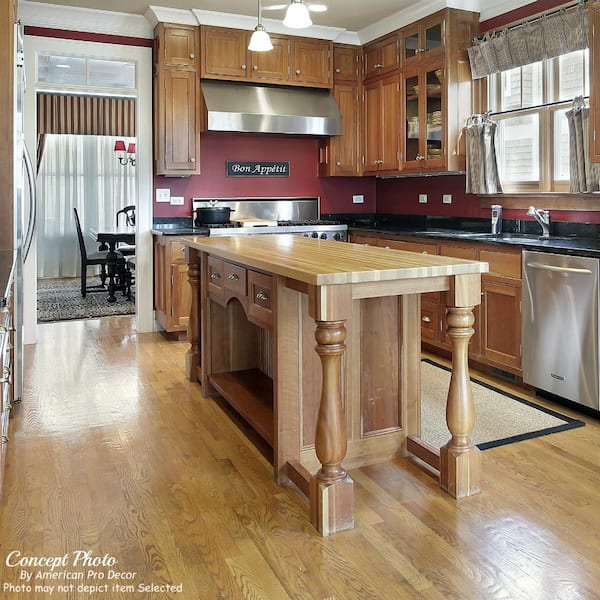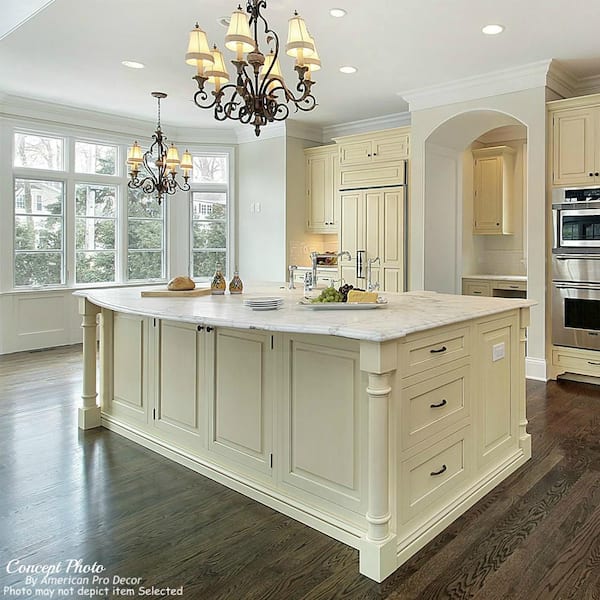Find Sturdy and Ornamental Legs For Kitchen Island Transformations
Necessary Aspects to Take Into Consideration When Choosing Legs For Kitchen Area Island
Selecting the suitable legs for a kitchen island involves a mindful analysis of several factors that can dramatically affect both performance and aesthetic appeal. Amongst these, the option of material plays a pivotal duty in making sure sturdiness, while the style has to enhance the existing design. Additionally, factors to consider such as elevation and weight assistance are necessary for security and convenience. As we check out these elements, it comes to be clear that each decision can have far-reaching effects for the overall cooking area experience. What nuances should be considered in each of these classifications to achieve the excellent balance?
Product Options
When picking legs for a kitchen island, recognizing the numerous material alternatives is important for accomplishing both visual appeal and structural honesty (Legs For Kitchen Island). The choice of material substantially influences not just the durability of the island but additionally its overall design and performance
Metal legs, commonly made from stainless steel or functioned iron, add a modern-day and commercial feeling while making sure longevity and security. These products are immune to use and can support considerable weight, making them optimal for larger islands.
Another option is crafted products, like MDF or plywood, which can be extra cost-efficient while still using a variety of surfaces. They may not supply the exact same degree of stability as strong timber or metal. Legs For Kitchen Island. Materials such as acrylic or glass can develop a modern look, though they may call for extra support to make certain security.
Ultimately, the option of material for kitchen island legs ought to align with the wanted capability and the general theme of the cooking area.
Design And Style

When thinking about design, the form and surface of the legs are essential. Tapered legs can supply a feeling of lightness and sophistication, while thicker, a lot more durable legs can communicate stamina and security. Furthermore, the surface-- be it painted, discolored, or natural-- ought to complement the cabinetry and countertop materials to create a unified appearance.
Moreover, the style of the legs can likewise show personal taste. Custom or attractive legs, such as those including complex carvings or one-of-a-kind geometric forms, can offer as prime focus, adding personality and individuality to the kitchen area. Ultimately, the right selection will certainly not only enhance functionality yet likewise elevate the visual allure, making the kitchen area island a standout feature of the home.
Elevation Factors To Consider
Picking the suitable elevation for kitchen island legs is critical, as it directly influences both performance and convenience. The conventional elevation for a kitchen island normally ranges from 36 to 42 inches, lining up with usual countertop elevations.

It is also important to account for customers' choices and heights. Customizing the elevation can make sure a comfortable experience for all relative, making the kitchen island an extra satisfying and practical space.
Weight Assistance
Making sure adequate weight assistance for kitchen island legs is essential for both security and functionality. The cooking area island typically serves several purposes, consisting of cooking, dining, and added storage, demanding a robust assistance structure. When picking legs, it is essential to take into consideration the overall weight ability required based upon the island's planned use and the products that will be put on it.
The choice of material for the legs plays a substantial role in their weight-bearing abilities. Strong wood, steel, and durable composites usually provide remarkable toughness compared to lighter materials. In addition, the design of the legs-- whether they are directly, tapered, or have a pedestal type-- can affect their ability to distribute weight successfully throughout the structure.
Additionally, the leg positioning should be strategically planned to improve stability. Legs placed at the corners or with a larger base can much better support much heavier lots. Constantly speak with the maker's requirements concerning tons limitations to make certain that the legs can maintain the desired weight without compromising safety. In summary, choosing kitchen area island legs with ample weight assistance is essential for creating a risk-free and practical culinary area.
Installment and Upkeep
Appropriate installment and maintenance of kitchen island legs are essential for making sure longevity and security. This typically involves check out here protecting the legs to the island base using proper fasteners, making sure that the legs are level and lined up.
Once mounted, routine upkeep is required to maintain the integrity and look of the legs - Legs For Kitchen Island. For wood legs, regular cleaning with a wet cloth and application of appropriate wood polish can protect against wetness damages and maintain their surface. Steel legs may need a mild cleansing service to get rid of grease and gunk, adhered to by a dry fabric to why not try here avoid rust formation
In addition, inspect the legs on a regular basis for indicators of wear or damages, such as fractures or loose joints. Tightening up screws or screws as required can additionally prolong the lifespan of the legs. By adhering to these setup and maintenance methods, house owners can make certain that their cooking area island continues to be sturdy and aesthetically appealing for years to come.
Conclusion

Visual comprehensibility is paramount in choosing the design and layout of legs for a cooking area island, as these elements greatly influence the general setting of the room. Tapered legs can supply a sense of agility and style, while thicker, more robust legs can convey stamina and click to read more stability.Selecting the proper elevation for cooking area island legs is crucial, as it directly impacts both functionality and comfort. In summary, choosing kitchen area island legs with appropriate weight assistance is crucial for developing a useful and secure cooking room.
In verdict, picking legs for a kitchen area island demands mindful factor to consider of different aspects, including material choices, design, elevation, weight assistance, and setup.